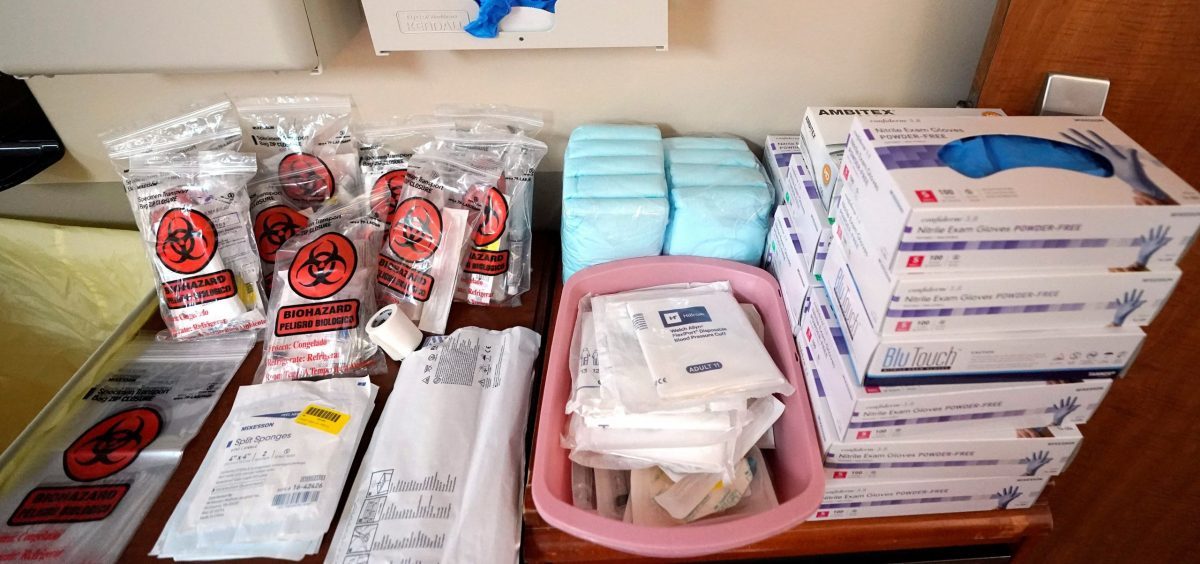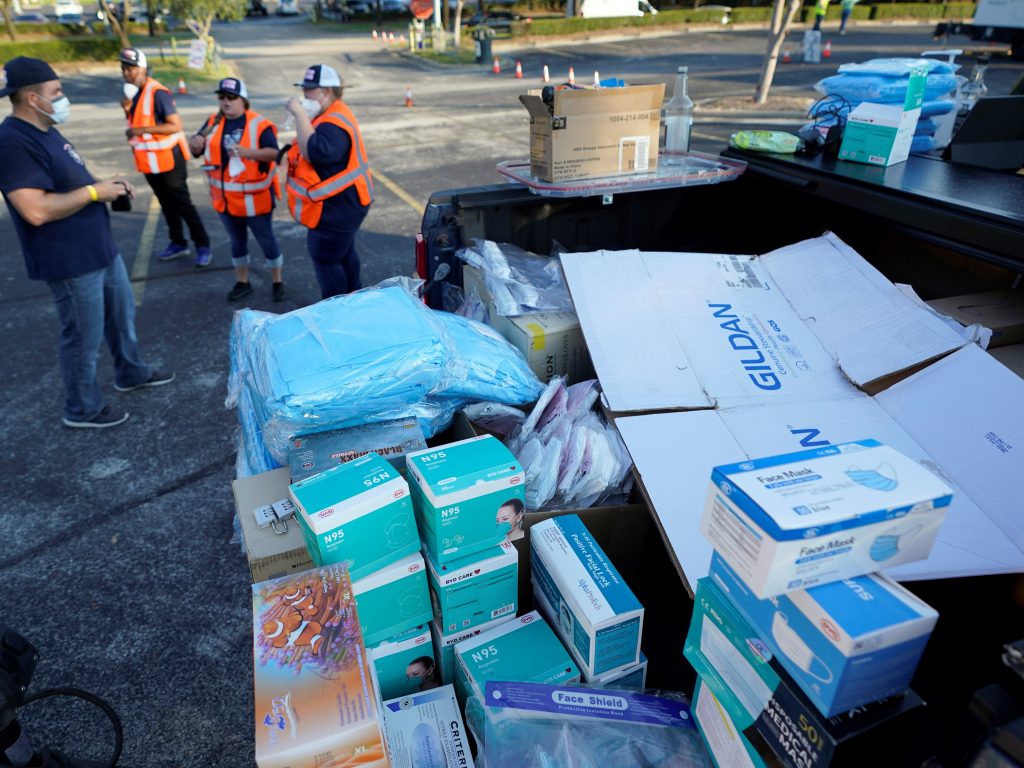News

Masks And Protective Gear Are Still Hard To Get — Especially For Small Buyers
By: Joel Rose | NPR
Posted on:
PHARR, Texas (NPR) — At the height of summer, temperatures climb to nearly 100 degrees most days in Pharr, a small city in South Texas. Nonetheless, nurse practitioner Oralia Martinez and her staff have set up a temporary exam room outside her small clinic.
This is their way of preserving masks and other personal protective equipment as they treat COVID-19 patients in the Rio Grande Valley, where infections are spiking. While Martinez and her colleagues sweat in full gear outside, the staffers and other patients inside the clinic aren’t exposed and don’t need as much PPE.
“It’s been very challenging for me, you know, seeing patients outside in this kind of heat, running my own practice, trying to keep employees, trying to keep them safe,” Martinez said. “Here in Texas, it has hit really, really hard, and we don’t have enough PPE to go around.”
Six months into the coronavirus pandemic, some schools are reopening. Dentists and family doctors are seeing patients again. More businesses are getting back to work.
And they’re all confronting a familiar problem: Masks and other personal protective equipment can still be hard to come by.
Just like in March, when coronavirus cases spiked for the first time, some workers and employers across the country continue to face PPE shortages. Masks, gloves, gowns, thermometers and other equipment are scarce. Demand has remained high, and prices have, too.
Churches, schools, businesses compete for same small supply
Now it’s not just hospitals, states and federal officials vying for the same PPE. Smaller operations without a lot of buying power — from cash-strapped school districts to independent medical practices — are entering the market.
“The dramatically increased demand is not going away anytime soon,” says Dr. Susan Bailey, president of the American Medical Association. “Churches, schools, businesses, everyone that’s trying to reopen needs PPE, and we’re all competing for the same small supply.”
The AMA has called repeatedly for a comprehensive federal response on the level of the Manhattan Project, the massive research project that developed the first nuclear weapons during World War II. The medical association says such a response should include a federal database to track where there are shortages and suppliers that can meet the demand.
The Trump administration has not done that. Instead, back in the spring, the administration launched Project Airbridge, which airlifted PPE from overseas; it wound down in June. The administration also ordered some domestic manufacturers to ramp up production.

“We created Project Airbridge. We were able to bring in from Asia … hundreds of millions of masks,” Kushner said. “We started domestic production by using the Defense Production Act.”
“So the federal government has done a lot to stimulate the supply,” he said.
Deep pockets amass stockpiles of PPE as small buyers struggle
The supply crunch has eased for some buyers. For instance, big hospital chains with deep pockets have been able to amass stockpiles of PPE. But smaller buyers say they’re still struggling to get what they need.
“Many manufacturers are asking that you buy 50,000 or 100,000 units of masks or gowns or gloves. A little clinic doesn’t need that many units, and they can’t afford it,” said Dr. Megan Ranney, an emergency physician who teaches at Brown University. “So it really puts PPE out of the reach of the providers that are working in the hardest hit areas.”
Ranney co-founded GetUsPPE, a nonprofit created in March to supply donated PPE to health care workers who still need it, including smaller assisted living facilities and community health centers.
“The PPE shortage, unfortunately, is not going away, and the PPE that is available remains far too expensive for many communities,” Ranney said.
Some schools that are opening their doors to in-person education this fall are also struggling to find enough PPE.
‘The federal government should be coordinating this’
Robin Cogan, who writes The Relentless School Nurse blog, said her school district in Camden, N.J., is having trouble sourcing protective gear for teachers and staff. She said she has heard from fellow school nurses in other cash-strapped districts who have been told to provide their own PPE when classes resume.
“We should not be asking our first responders, who are the school nurses, to get their own equipment. To me, that’s unconscionable,” Cogan said.
Cogan said she’s shocked that the PPE shortage has lasted as long as it has. And she’s not the only one.
“It is unbelievable that we’re having to fight to get PPE,” said Dr. Sandra Fryhofer, a primary care physician with a small office in Atlanta.
Fryhofer said she was able to buy some N95 respirator masks through a bulk order organized by the AMA and others. Since then, she has been conserving masks by hanging them in paper bags from a clothesline in the back of her office and then reusing them.
“The federal government should be coordinating this. Access to PPE should not be a problem during a pandemic,” Fryhofer said.
“The small practices have been totally left out and it didn’t have to be that way. All it would take is a national coordinated effort to make and distribute PPE,” she said, “to make sure we have enough not just for today, but also for tomorrow.”
9(MDI4ODU1ODA1MDE0ODA3MTMyMDY2MTJiNQ000))

